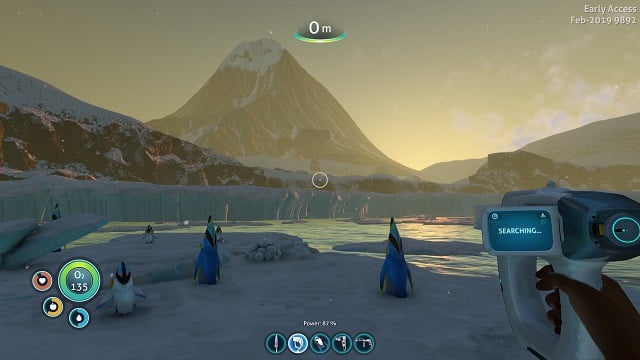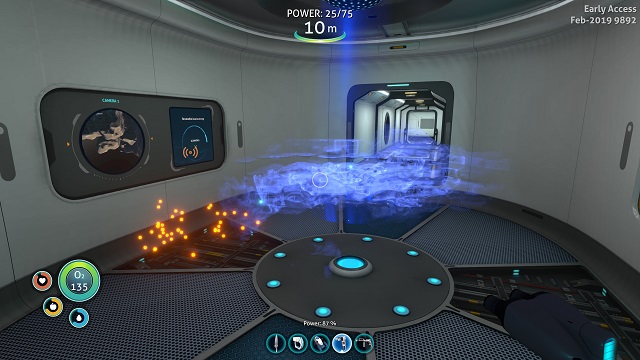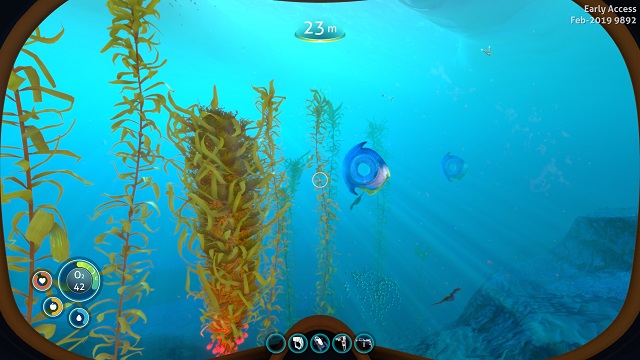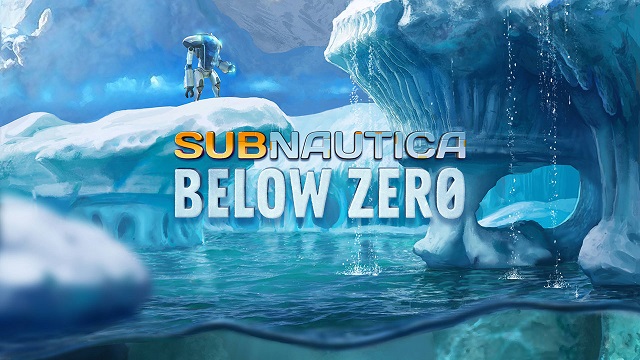Although it’s still early days for the Early Access expandalone, Subnautica Below Zero‘s ultimate place in the survival subgenre is currently murky. Much like an estuary, where the river meets the ocean to form a convoluted brine, Below Zero works and it also doesn’t.
Combining both old elements and new, Below Zero simultaneously clings to heritage while attempting to expand the boundaries of its predecessor. From the surface, such a description seems obvious for what Unknown Worlds calls a sequel to 2018’s Subnautica. Often, sequels occupy the muddy waters between what came before and what’s to come.
But being in Early Access, Below Zero isn’t finished, so that mixture is currently imperfect. Many of its new features work, but choppily, and those that remain from Subnautica are incomplete, even considering the game is still in early development.
Coming off of the success that was Subnautica, where Unknown Worlds leveraged the power of the survival-game community to create an indie classic, Below Zero feels very much like the expansion many thought it would be, not the full-fledged game it will (hopefully) become.

Let Me Tell You a Story
Whereas a large portion of Subnautica‘s narrative was conveyed through in-game lore and radio transmissions, Below Zero takes a different approach by putting players in the boots of Robin Goodall, a researcher who’s come to Planet 4546B a year after the events of the first game.
Like Subnautica, players are once again alone on the planet’s surface. The wrinkle this time is that they have the support of their sister orbiting 4546B in the space station above. In some ways, having someone to talk to is a welcomed change to the isolation of Subnautica; exploring Below Zero’s icy depths is now part of a larger, seemingly more cohesive narrative.
However, the greater emphasis on story comes at a price. In Subnautica, story progression was tranquil, often unhurried; there was wreckage to explore and there were milestones to meet, but very few narrative beats were pressing. For the most part, progression was carried out at the player’s pace, and the moments that triggered narrative progression were often subtle.
I don’t want to imply that Below Zero is all talk and all story; it does have its quiet moments, ones that harken back to the placid exploration of Subnautica. Instead, I mean to convey that Below Zero‘s quiet moments are more infrequent, with fewer beats triggered by the player interacting with elements in the game world.
To say it’s immersion breaking would be pedantic and overdramatic, but to not acknowledge the impact of uncontrolled triggered events in a world built around such expansive freedom would be disingenuous.

A Large World Made Small, But Not Less Interesting
As it stands, Below Zero has only a few areas to explore. Thankfully, the game’s unique topography once again makes exploration a delight.
Icebergs sink into glacial waters for fathoms; winding rock bridges clamber over underwater canyons; phosphorescent florae ignite the depths with wondrous light; and new variants of towering creepvine emit haunting shades of red from their bulbous clusters.
Among the familiar fauna, such as bladderfish and eyeye, there are new species to find. Some are dangerous, some are benign, but all are intriguing and unique. New plant species sprout from the sea floor and run across megalithic cliffs; some provide oxygen at greater depths and some provide new crafting materials for old items and gear.
Outside of exploration, most of Below Zero‘s gameplay revolves around harvesting plants or mining various metals such as titanium, copper, silver, and lead.
While crafting supplies are plentiful, Below Zero‘s craftable tools and items are not. In a groan-worthy early-game development, your PDA is wiped of all blueprints. Starting with only the most basic of items, you’re forced to rediscover key items as part of the exploration loop.
Although such a mechanic is a survival game staple, starting the game destitute feels like nothing more than an obtuse MacGuffin, something lumpishly reinforced as the space station above slowly delivers tools and supplies piecemeal.
The logical disconnect between the survival loop and such a narrative contrivance can be jarring and nonsensical. Having access to all of Subnautica‘s base blueprints needn’t compromise Below Zero‘s exploration elements; instead, if added to a stock of new blueprints and craftable items, those elements would logically build upon what came before.

Where Below Zero Stands Right Now
Despite what I’ve said above, I want to make something abundantly clear: I very much like Subnautica Below Zero because it’s more Subnautica. Knowing what Unknown Worlds has accomplished with its original survival darling makes me hopeful for Below Zero‘s future.
Looking back to Subnautica‘s early days, Below Zero casts an eerily similar reflection. Unknown Worlds has navigated these brackish waters before, molding an Early Access title into a finished game that currently has over 88,000 positive reviews on Steam.
With its narrative clocking in at around six hours, Below Zero already has enough content to warrant an early look. Outside of that, there are still hours to be had exploring the game’s depths and, if you dare, unfinished areas of the map.
The lack of tools and nagging bugs are worth noting, but certainly not damning. Although I can’t shake the feeling Below Zero should have been a Subnautica expansion instead of a sequel, Unknown Worlds can count on me jumping back in throughout its development.
Subnautica Below Zero is available now on Steam for $19.99. There is currently no word on when or if the game will be released on console.










Published: Feb 25, 2019 11:26 am